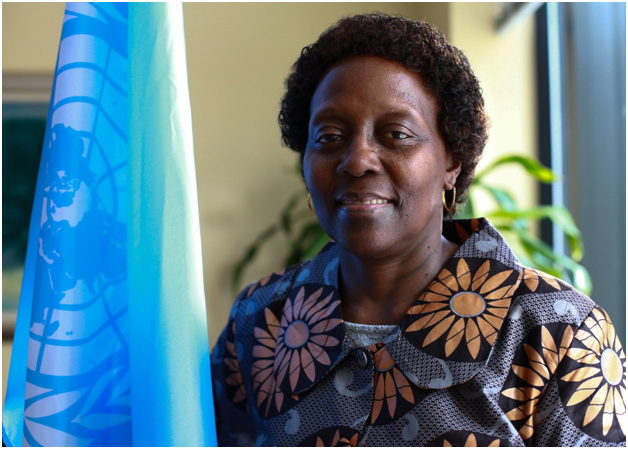Thursday, May 16, 2024
News and Views from the Global South
A Post-2020 Global Biodiversity Framework Aims at Reinforcing Efforts to Save World’s Ecosystem

Credit: IPBES
- The UN’s highly-touted socio-economic agenda, which lays out an ambitious global plan for “people, planet and prosperity”, has been dominated by “goals, targets and deadlines.”
But regrettably, most developing nations are struggling to reach these goals—due largely to a shortfall in much-needed funding or lack of political will on the part of most governments.
The 17 Sustainable Development Goals (SDGs)– which was launched in 2015 and includes the proposed eradication of extreme poverty and hunger– are expected to be achieved by the targeted date of 2030.
But judging by the limited progress made so far, even the United Nations is skeptical about winning the race against global poverty and hunger– on deadline—besides achieving gender equality, quality education and climate action worldwide.
The 2016 Paris Climate Change agreement has “a global stock-take every 5 years to assess the collective progress towards achieving the purpose of the Agreement and to inform further individual actions by Parties.”
And the 20 Aichi Biodiversity Targets — aimed largely at protecting and preserving the world’s ecosystems–have a 2020 deadline, with just 10 months to go.

Credit: Secretariat of the Convention on Biological Diversity (CBD)
The 20 global targets were formulated under the 2011-2020 Strategic Plan for Biodiversity and grouped under five goals, including addressing the underlying causes of biodiversity loss by mainstreaming biodiversity across governments and society, reducing direct pressures on biodiversity while promoting sustainable use; and improving the status of biodiversity by safeguarding ecosystems, species and genetic diversity.
In the run-up to an upcoming UN Biodiversity Conference in China, officials and experts will convene at FAO headquarters, Rome, February 24-29. for negotiations on the initial draft of a landmark post-2020 global biodiversity framework and targets, extending through 2030.
The new framework will be considered and adopted by the 196 Parties to the Convention on Biological Diversity (CBD) at the 2020 UN Biodiversity Conference (CBD COP15), scheduled to take place October 15-28,
In Kunming, China.
Asked if the Aichi achievements are far below targets, Elizabeth Maruma Mrema, Acting Executive Secretary of the Secretariat of the Convention on Biological Diversity (CBD), told IPS “as you point out, research is leading us to the conclusion that actions have not been sufficient to accelerate progress to achievement of the Aichi Targets to the extent required – and consequently, that none of the 20 Aichi Biodiversity Targets are likely to be fully met, although some specific components or elements within the targets have been achieved”.
She said the full assessment of the status of the targets will be published in Global Biodiversity Outlook 5, which will be released on 18 May 2020.
“But we can say in general, that there has been a wealth of policies and actions developed in all parts of the world to address biodiversity loss, even if cumulatively they have not been sufficient to meet the goals agreed by the global community.”
“We will need to build on these as we move forward to achieve the 2050 Vision”, she noted.

Elizabeth Maruma Mrema
Excerpts from the interview:
IPS: There have been reports that very few people have ever heard of the Aichi Biodiversity Targets compared to SDGs and the Paris climate change agreement. Is this a fair characterization? How important is public outreach and how will this be different for the post-2020 Biodiversity Framework?
Mrema: Progress has been made in public awareness and understanding of biodiversity and its values; there is wide variation across countries and attention to biodiversity in the media remains at a much lower level than coverage of climate change.
Nevertheless, the heightened public alarm about the impacts of climate change is frequently expressed alongside dismay at the state of biodiversity, in particular the extinction crisis.
The media coverage of the IPBES Global Assessment in 2019 was incredible, and this has demonstrated that people are ready to engage on this agenda. But more can be done.
This is why the Parties have asked that any post 2020 global biodiversity framework include an innovative and active communications and outreach strategy, which will be developed as part of the negotiations.
IPS: What shortcomings, if any, have been already identified in feedback about the zero draft of the post-2020 global biodiversity framework? Are you expecting any significant changes to the draft before adoption?
Mrema: The Parties will only provide their feedback on the zero draft when the meeting of the working group begins in Rome on 24 February. I invite you and your readers to follow the proceedings of the meeting, which will be webcast.
IPS: As the 20 targets are expected to expire by the end of 2020, will the Parties to the CBD adopt a revised set of targets for the post-2020 global biodiversity framework? Any indications of what these revised targets would be?
Mrema: As you correctly point out, the period for the implementation of the Strategic Plan 2011-2020 is nearing its end. In 2018, the Conference of the Parties, at its fourteenth meeting in Sharm-el-Sheikh, Egypt adopted a process for developing a post-2020 global biodiversity framework by establishing an Open-ended Working Group (WG2020) to support this process and appointing two Co-chairs, Francis Ogwal (Uganda) and Basile van Havre (Canada) to lead the process.
Subsequently, the WG2020, at its first meeting in August 2019 in Nairobi, requested the Co-chairs and the Executive Secretary, with the oversight of the Bureau, to prepare a zero draft text of the post-2020 global biodiversity framework for consideration by the second meeting of the Working Group, which will be held from 24 to 29 February 2020 in Rome.
The Co-chairs and the Acting Executive Secretary, made this “zero draft” of the global biodiversity framework available on 13 January.
The Zero draft was prepared based on extensive regional and thematic consultations, the advice from the Subsidiary Body on Scientific, Technical and Technological Advice and from the Working Group on Article 8 J and written submissions.
The Zero draft was also developed taking into account global trends and future scenarios, including the Global Assessment Report on Biodiversity and Ecosystem Services,
The framework is built around a theory of change which recognizes that urgent policy action globally, regionally and nationally is required to transform economic, social and financial models so that the trends that have exacerbated biodiversity loss will stabilize in the next 10 years (by 2030) and allow for the recovery of natural ecosystems in the following 20 years, with net improvements by 2050 to achieve the Convention’s vision of “living in harmony with nature by 2050”.
The zero draft contains suggested global goals for 2030 and 2050 and action-oriented targets for 2030. As I noted, there will be considered by the Parties at their meeting taking place next week in Rome.
The writer can be contacted at thalifdeen@ips.org
-
http://Gore4.com/ BDTrooper

 Print
Print



